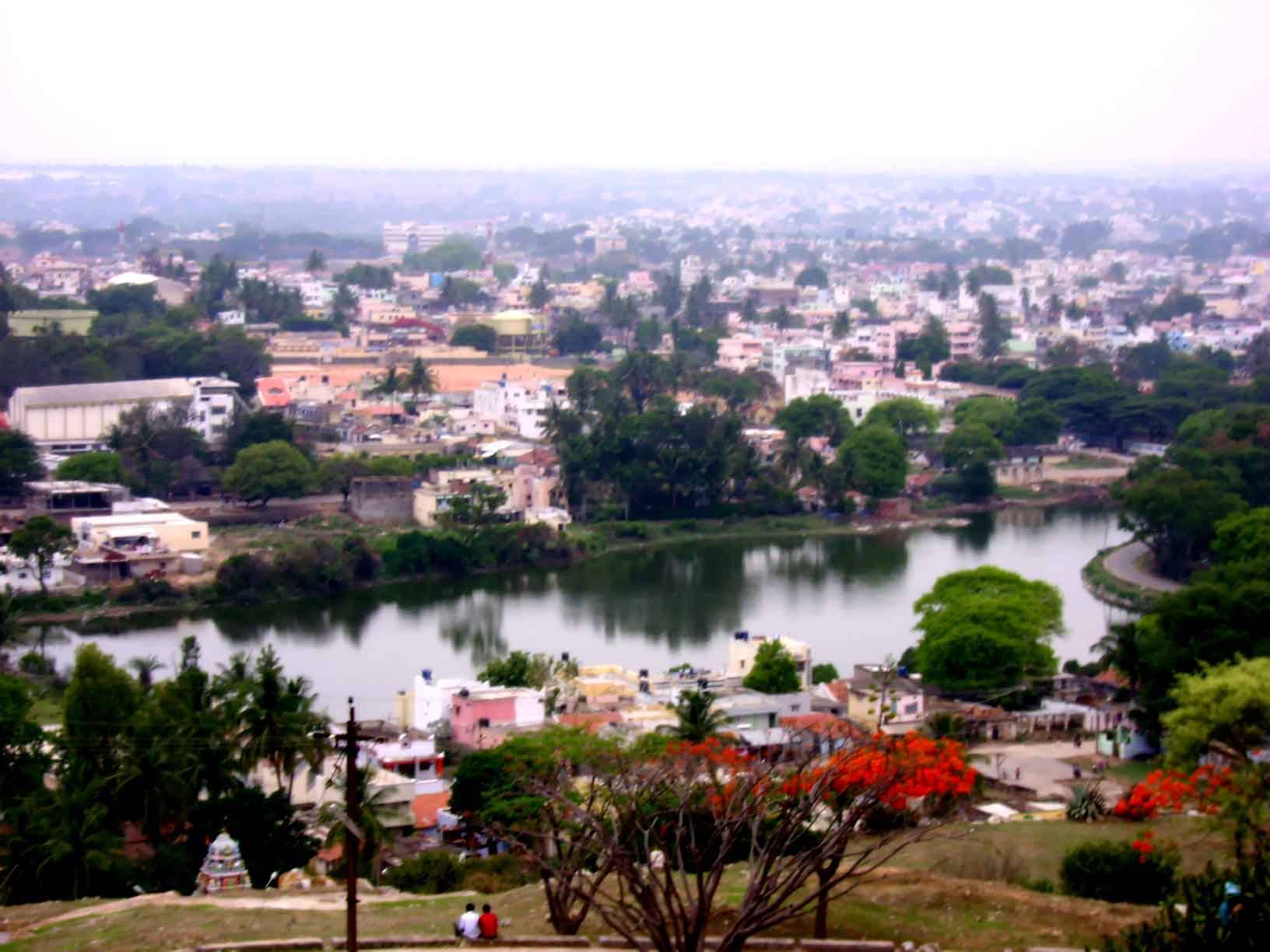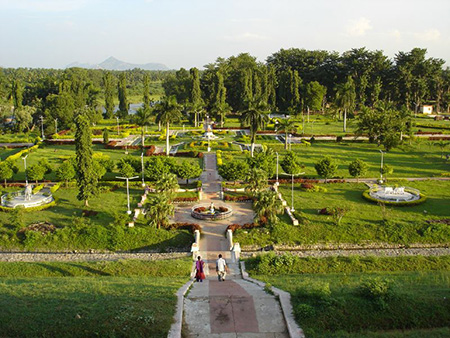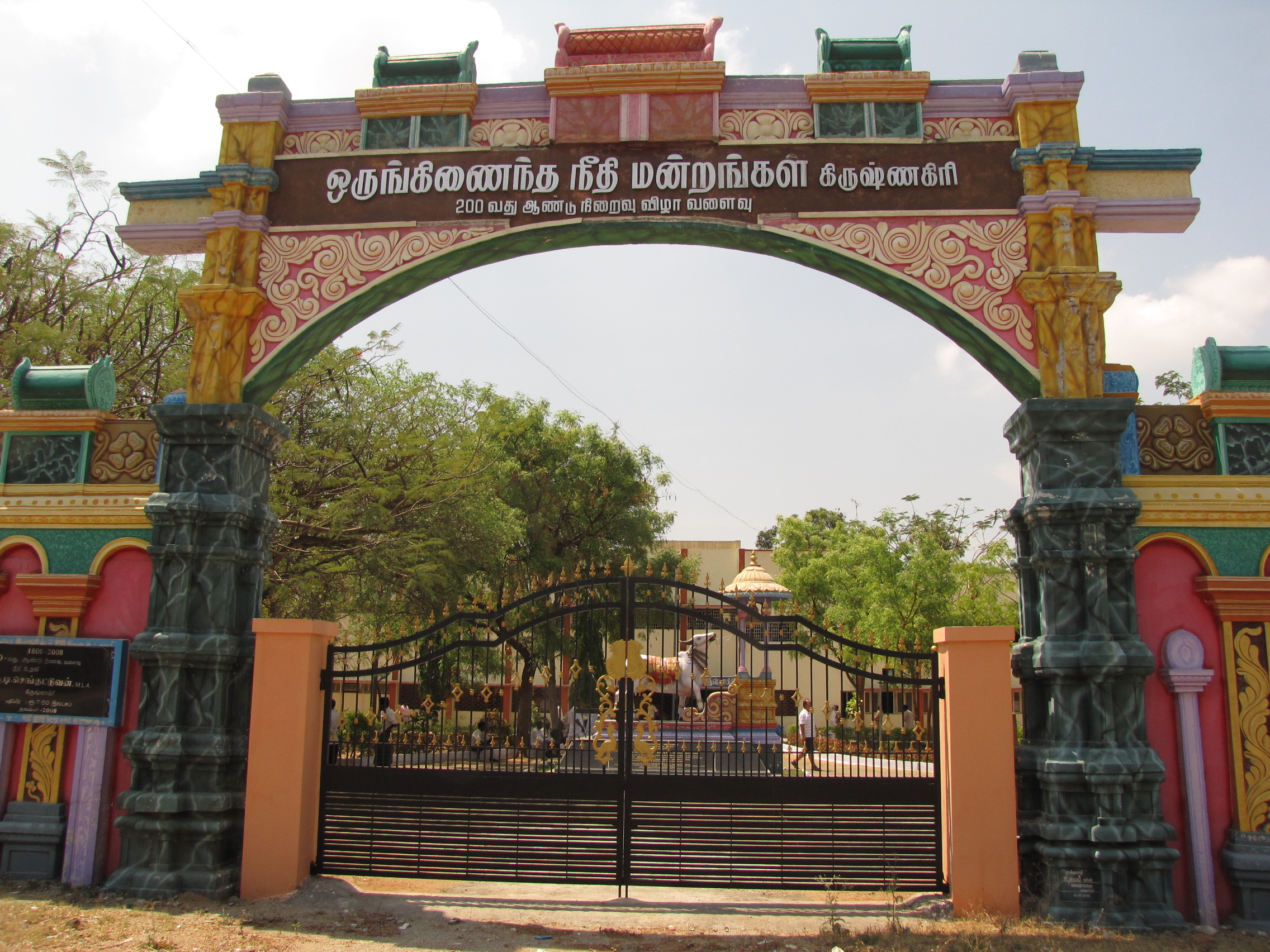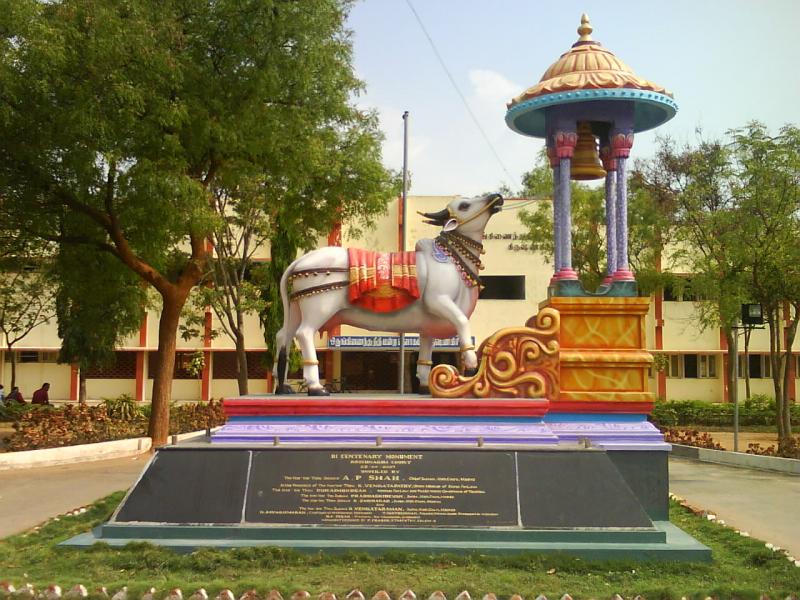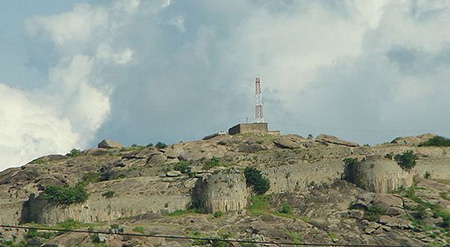Krishnagiri Districts
Krishnagiri Districts |
About: |
| Krishnagiri District in Tamil Nadu, India, is steeped in rich historical and archaeological significance, showcasing human habitation dating back to the Paleolithic, Neolithic, and Mesolithic ages. The district features rock carvings and paintings linked to the Indus Valley civilization and Iron Age, emphasizing its prehistoric importance. Known by various names over the centuries, the district's historical areas, such as Kaveripattinam, Hosur, and Uthangarai, were once called Eyil Nadu, Murasu Nadu, and Kowoor Nadu, respectively. During the Chola era, Krishnagiri was known as "Nigarili Chola Mandlam" and "Vidhugadhazhagi Nallur." Under the Nulamba rule, it was referred to as "Nulambadi." The region has a tradition of hero stones, known as Navagandam, erected as memorials for warriors and individuals who sacrificed their lives, which are still visible today and reflect the valor and values of its people. In 1794, a mint was established here, producing gold, silver, and copper coins. The British stronghold, Rayakottai Fort, lost its strategic importance by 1880 but remains a historical site. Krishnagiri has also contributed numerous soldiers to India's defense forces, and patriots from this district, including Dr. C. Rajagopalachari, participated actively in India's freedom struggle. Dr. Rajagopalachari became independent India’s first Governor-General and a Chief Minister. |
Location info: |
|
District Headquarters: Krishnagiri District Collectorate Address: District Collector Office, Krishnagiri - 635001, Tamil Nadu, India Pincode: 635001 |
Climate/Weather of Krishnagiri Districts: |
Overall, Krishnagiri has a moderate climate suitable for agriculture and outdoor activities, with the monsoon season replenishing water sources and supporting the district’s agriculture. |
History of Krishnagiri District: |
|
Krishnagiri District in Tamil Nadu has a rich historical background with traces of human habitation dating back to the Paleolithic, Neolithic, and Mesolithic ages. Various rock paintings and carvings found here relate to the Indus Valley Civilization and Iron Age, marking it as a region of ancient significance. Historic Names and Kingdoms: Over centuries, Krishnagiri was known by different names:
Tradition of Hero Stones: The district has a unique tradition of erecting memorial stones called *Navagandam* to honor warriors who sacrificed their lives for their king, a practice dating back to the Sangam age. British Era: Krishnagiri came under British control after the Treaty of Srirangapattinam in 1792. In 1794, a mint was established here to produce gold, silver, and copper coins. Rayakottai Fort, another landmark, was a key British stronghold until its importance declined in 1880. Modern History: The region’s contributions during India's freedom struggle include notable figures like Dr. C. Rajagopalachari, the first Governor-General of independent India. Krishnagiri was carved out of Dharmapuri in 2004, becoming Tamil Nadu's 30th district. Today, Krishnagiri stands as a testament to its ancient and modern historical journey, preserving cultural heritage while progressing towards development. |
Educational Institutions of Krishnagiri District: |
|
Krishnagiri District in Tamil Nadu offers a diverse range of educational institutions, catering to various academic and professional fields. Below is an overview of notable institutions across different categories: Engineering Colleges:
Arts and Science Colleges:
Polytechnic Colleges:
Teacher Education Institutions:
Schools:
These institutions contribute significantly to the educational landscape of Krishnagiri District, providing diverse learning opportunities for students across various disciplines. |
Languages: |
|
Culture: |
|
Krishnagiri District has a vibrant and rich cultural heritage deeply rooted in Tamil traditions. The district reflects a blend of traditional values, customs, and rituals that have been preserved through generations. Festivals: Major festivals celebrated here include Pongal, Deepavali (Diwali), and Ayudha Pooja, which highlight the district’s agricultural and religious heritage. Festivals bring communities together with traditional music, dance, and feasts. Art and Dance: Folk arts, including traditional Tamil music and dance forms like Karagattam and Mayilattam (Peacock Dance), are popular, especially during festivals and community gatherings. Handicrafts and Textiles: The district is known for its skilled artisans who produce handloom textiles and pottery. Craftsmanship in wood, metal, and stone carving is also notable, reflecting traditional Tamil artistry. Food: The local cuisine primarily consists of rice-based dishes, with popular items including idli, dosa, and sambar. Millet-based dishes are also widely enjoyed, reflecting the agricultural produce of the region. Community Values: People in Krishnagiri are known for their hospitality, respect for elders, and deep-rooted community values. Family and communal gatherings play a central role in social life. The cultural richness of Krishnagiri is reflected in its art, festivals, food, and traditional values, which make the district unique and a stronghold of Tamil heritage. |
How to Reach Krishnagiri: |
|
Tourist Attractions in Krishnagiri District: |
|
Hotels and Accommodations in Krishnagiri District: |
Lodges and Inns:
Resorts and Specialty Lodgings:
It's advisable to check the latest reviews and availability before making a reservation, as facilities and services may change over time. |
Useful Links: |
Krishnagiri Districts |
| Krishnagiri Reservoir Project: |
| KRP dam is situated at a distance of 7 Kms from Krishnagiri. It is in between Dharmapuri and Krishnagiri. Thousands of acres of land around Krishnagiri is irrigated with the help of this dam. This is a famous tourist spot too. This dam is flooded with tourists during the week ends.............................................more |
| Thali-Littele England: |
| This place is about 25 Kms from Hosur. It is at the border of Tamil Nadu adjoining Karnataka. It is situated in the land of valleys and cliffs. The climate is very cool and pleasant. It experiences cold and cloudy weather resembling England. Hence it is popular with the name 'Little England' since British Regime. The area is covered by a number of hills. The climate is chill round the year. It is called Little England. The taluk headquarters is Denkanikottai. The fort at Denkanikottai is built by Palayakarar in 1530 AD. The fort is destroyed during war with Hyder Ali and Tippu Sultan. There is a temple for Venugopala Swami. Car festival is held during the month of May every year. Thousands of devotees visit during this festival................................................more |
| Kelevarapalli Reservoir Project: |
| Construction of this project was completed in 1995 AD. It is situated at a distance of 10Kms from Hosur. It is only 8 Kms away from Karnataka state. This has become a picnic spot for citizens of Hosur area. Tourists from adjoining state often visit this place on holidays....................................................more |
| Government Museum: |
| The presence of museum in this District is known for traditional culture, Art and Architecture, Heritage and Historical Background is a blessing in disguise, to spread the traditional and heritage, culture and art of Tamil Nadu and Krishnagiri District in particular. This museum is functioning since 1993 AD, situated on Gandhi Salai in Krishnagiri. Historical monuments are preserved and exhibited here. It is not only a place of tourism but also a center of education. This museum collects the monuments, Classifies and preserves them to conduct research on it's historical worthiness.........................................more |
| Rajaji Memorial -Thorapalli: |
| In memory of the great leader Rajaji, the Tamil Nadu Government has converted the house in Thorapalli where Rajaji was born, as a memorial. It is located 10 Km from Hosur near Onnalvadi. Some of his belongings and a photo gallery depicting his various walks of life are displayed here................. ..........................more |
| Rayakottah: |
| Rayakottah, a hill fort, situated at a distance of 30 Km from Hosur marks the border of the Palghat plateau. Even after the Mysore wars, for the British it was a strategic place where their troops were stationed till 1861. The ramparts and the bastions of the fort are more or less intact. The fort is a protected monument............................more |
| Mallachandram: |
| It is located 19 km from krishnagiri and 4 km from samalpallam. Samalpallam lies on the krishnagiri-Bangalore Road N.H 7.The Ancestors cult was worshiped by the Megalithic people in the ancient period. In krishnagiri District three kinds of memorials are observed and they were named a Cairn circle, Dolmen and Urnburials.
In Mallachandram more than 100 Dolmens are identified in the Moral Pari. Four types of dolmens in this single place. Dolmen built of four vertical orthostats with a huge round cap stone is covered by the top.In the second type there are double circles made of vertical slabs and the fort hole is found in the eastern side of the dolmen. The tall vertical slab is in semi-circular top. This is one of the important dolmen found in Tamil nadu.Third one is having the similar architectural form of the second type of dolmen. But the port hole and passage are raised up to the port hole level. Smaller dolmens are rercted around the big dolmen. In other words a big dolmen was surrounded by the small dolmens. It looks like a group of people found around the head man.........................more |
| Hanumanthathirtham: |
| This place is situated on the bank of Pennaiyar at a distance of 10 Km from Uthangarai and traditionally associated with Tirtamalai. It is believed that Hanuman who was instructed by Lord Rama to get the water from the Ganges for his penance at Tirtamalai which he could not do it in time. So Rama was said to have done Asthrapryogam and got it. Disappointed at this, Hanuman was said to have thrown down the vessel in which he brought the holy water and this spilled water is believed to be the 'Hanumantirtham'. The water is considered sacred and during the Tamil month of Aadi (July-August) people frequent this spot.........................more |

